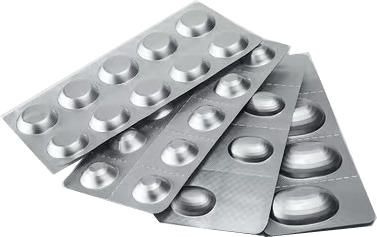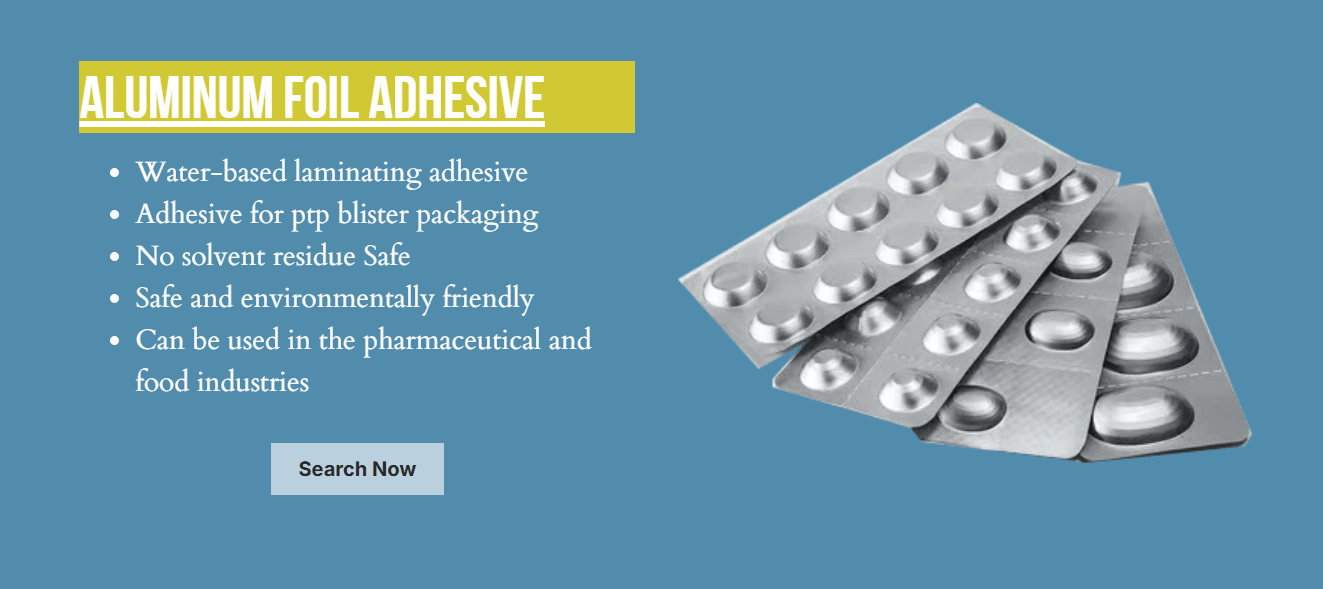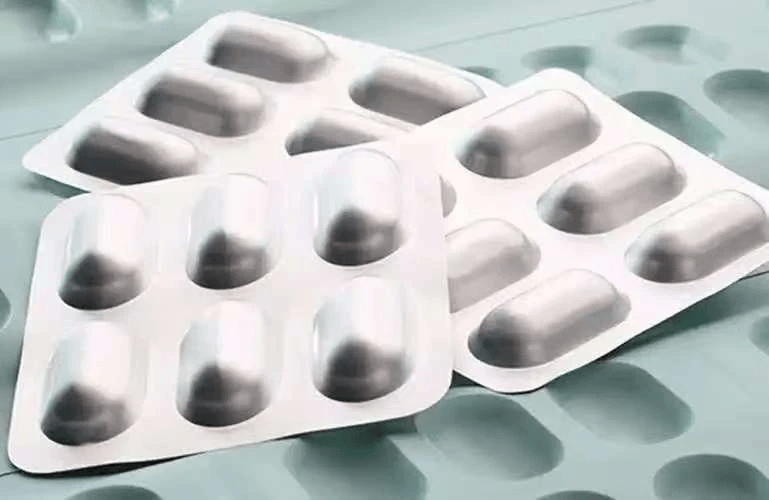Introduction

In the world of packaging, selecting the right adhesive is crucial for ensuring product integrity and consumer safety. The choice of a PVC pharmaceutical packaging adhesive can significantly impact both functionality and sustainability in blister pack applications. With various options available, understanding the nuances of these adhesives is essential for achieving optimal results.
Importance of Choosing the Right Adhesive
The right adhesive not only secures products but also plays a vital role in maintaining their efficacy and shelf life. In industries like pharmaceuticals, where precision is paramount, a PVC blister pack adhesive must be reliable and compatible with other materials used in packaging. Choosing an inappropriate adhesive can lead to product failures, compromising safety and customer trust.
Overview of Blister Pack Packaging
Blister packs are widely used in the pharmaceutical industry due to their ability to provide protection from environmental factors while allowing easy access to individual doses. Typically made from PVC film for blister packaging adhesive, these packs offer excellent barrier properties against moisture and oxygen. This makes them an ideal choice for medications that require strict adherence to storage conditions.
Common Materials Used in Packaging
Packaging materials vary greatly, but some of the most common include plastics like PVC vinyl film, paperboard, glass, and metal foils. Among these, PVC stands out due to its versatility and effectiveness as a pharmaceutical packaging material. The combination of durability and flexibility makes PVC blister packaging adhesive a preferred choice for manufacturers aiming for quality assurance while keeping production costs manageable.
Understanding PVC Pharmaceutical Packaging Adhesives

When it comes to pharmaceutical packaging, choosing the right adhesive is crucial for maintaining product integrity and safety. PVC pharmaceutical packaging adhesive has become a popular choice due to its versatility and effectiveness in various applications. Let’s dive into the benefits, types, and key characteristics of these adhesives that make them stand out in blister pack solutions.
Benefits of PVC in Packaging
PVC (polyvinyl chloride) is widely regarded for its durability and adaptability in packaging applications. One of the primary benefits of using PVC is its excellent barrier properties, which help protect sensitive pharmaceutical products from moisture, light, and oxygen exposure. Additionally, PVC blister packaging adhesive offers a cost-effective solution while ensuring compliance with stringent regulatory standards in the pharmaceutical industry.
Another advantage of PVC is its ability to be easily molded into various shapes and sizes, making it ideal for customized blister packs. The flexibility of PVC vinyl film allows manufacturers to create eye-catching designs that not only enhance product visibility but also improve user experience. Furthermore, the compatibility of PVC with various adhesives ensures strong bonding capabilities essential for maintaining product integrity.
Types of PVC Adhesives on the Market
The market offers several types of PVC blister adhesives tailored to meet specific needs in pharmaceutical packaging. Solvent-based adhesives are among the most common options; they provide strong adhesion but may pose environmental concerns due to volatile organic compounds (VOCs). Water-based adhesives have gained popularity as a more sustainable alternative while still delivering reliable performance for PVC blister pack applications.
Additionally, hot melt adhesives are another viable option; they offer quick setting times which can enhance production efficiency. Each type has unique properties suited for different manufacturing processes and requirements—so understanding these distinctions is vital when selecting your preferred adhesive solution.
In recent years, innovations have led to specialized formulations designed specifically for use with PVC film for blister packaging adhesive applications. These advancements ensure improved bonding strength while minimizing potential issues such as delamination or peeling over time.
Key Characteristics of PVC Packaging Adhesives
When evaluating any type of adhesive for use with PVC materials, several key characteristics should be considered to ensure optimal performance. First and foremost is adhesion strength: a high-quality PVC blister packaging adhesive must create a robust bond between layers without compromising product integrity or shelf life.
Another critical characteristic is chemical resistance; pharmaceuticals often contain active ingredients that can interact negatively with certain adhesives if not properly formulated. Therefore, choosing an appropriate adhesive that withstands such interactions will help maintain product efficacy throughout its lifespan.
Lastly, ease of application plays an essential role in the overall success of using a particular adhesive type within manufacturing processes—especially concerning production speed and efficiency during assembly lines utilizing flexible materials like pvc vinyl film.
The Role of PVC Vinyl Film

PVC vinyl film plays a pivotal role in the effectiveness and efficiency of blister packaging, particularly in the pharmaceutical sector. This versatile material not only provides an excellent barrier against moisture and oxygen but also enhances the overall aesthetic appeal of the product. When paired with a suitable PVC pharmaceutical packaging adhesive, it ensures that products are well-protected while maintaining their integrity.
Advantages of PVC Vinyl in Blister Packs
One of the standout advantages of using PVC vinyl in blister packs is its durability and strength. This material can withstand various environmental conditions, making it an ideal choice for protecting sensitive pharmaceutical products from damage or contamination. Additionally, PVC vinyl film offers excellent clarity, allowing consumers to see the product inside while providing tamper-evident features that enhance security—an essential factor for any PVC blister packaging adhesive.
Moreover, PVC vinyl's flexibility allows for intricate designs and shapes in blister pack formation, which can be crucial for branding and marketing purposes. The ability to customize these packs means companies can create unique presentations that stand out on pharmacy shelves. Ultimately, choosing PVC vinyl film contributes significantly to both functionality and visual appeal in blister packaging solutions.
How PVC Vinyl Affects Adhesive Performance
The interaction between PVC vinyl film and adhesives is critical for ensuring optimal performance in blister packs. The choice of a compatible PVC blister adhesive can significantly influence adhesion strength, ensuring that the seals remain intact throughout the product's shelf life. If mismatched adhesives are used with non-compatible films, it could lead to adhesive failures or compromised product safety—something no company wants on their conscience.
Moreover, certain characteristics of PVC vinyl affect how well an adhesive bonds with the film surface; for instance, surface energy plays a crucial role here. Higher surface energy promotes better wetting by adhesives, leading to stronger bonds—a fundamental aspect when selecting your preferred PVC packaging adhesive. Therefore, understanding these interactions helps manufacturers choose appropriate materials that maximize both performance and reliability.
Best Practices for Using PVC Vinyl Film
To get the most out of your chosen materials when working with PVC vinyl film in blister packs, adhering to best practices is essential. First and foremost is ensuring proper surface preparation before applying any adhesive; cleaning surfaces helps remove contaminants that could hinder adhesion quality—this step cannot be overlooked!
Secondly, always consider temperature conditions during application; both ambient temperature and humidity levels can impact how well your chosen PVC blister pack adhesive performs during bonding processes. Finally, testing different combinations of adhesives and films under real-world conditions will provide valuable insights into what works best for your specific application needs.
By following these best practices when using PVC film for blister packaging adhesive applications, manufacturers can achieve optimal results while minimizing potential issues down the line—ensuring their products remain safe and appealing from production all the way to consumer use.
Exploring PVC Blister Packaging Adhesive Options

When it comes to selecting the right adhesive for PVC blister packaging, the options can be as diverse as the products themselves. Understanding the differences between various adhesive types is crucial in ensuring product integrity and performance. From solvent-based to water-based formulations, each type of adhesive offers unique benefits tailored to specific applications in PVC pharmaceutical packaging.
Differences Between Various Adhesive Types
The landscape of PVC blister adhesives includes a variety of formulations, each with distinct properties. Solvent-based adhesives tend to provide strong initial bonds and are often favored for their quick curing times; however, they may pose environmental concerns due to volatile organic compounds (VOCs). Conversely, water-based adhesives are gaining traction in the market for their eco-friendliness and lower toxicity levels, making them suitable for use in sensitive environments like pharmaceutical packaging.
Another important distinction lies in how these adhesives interact with PVC vinyl film. Some adhesives are specifically designed to work optimally with certain types of PVC film for blister packaging, enhancing overall adhesion and durability. Additionally, hybrid options that combine features from both solvent and water-based systems are also available, offering versatility depending on your production needs.
Factors Influencing Adhesive Selection
Selecting the right PVC blister adhesive involves considering several key factors that can significantly impact performance and compliance. First and foremost is the compatibility between the adhesive and the specific type of PVC film used; mismatched materials can lead to failures like delamination or reduced shelf life. Other considerations include processing conditions such as temperature and humidity during application which may affect curing times or bond strength.
Regulatory requirements also come into play when choosing a PVC pharmaceutical packaging adhesive; adherence to industry standards ensures safety for consumers while maintaining product efficacy. Cost-effectiveness is another critical factor—while premium adhesives may offer superior performance, budget constraints often dictate choices in commercial settings. Finally, understanding end-user needs—such as ease of opening or resealability—can guide you toward an adhesive that enhances user experience without compromising quality.
Real-World Applications of PVC Blister Adhesives
PVC blister packaging is widely utilized across various sectors including pharmaceuticals, consumer goods, and electronics due to its protective qualities and visibility features. In pharmaceuticals specifically, using a high-quality PVC blister pack adhesive ensures that medications remain sealed from environmental contaminants while allowing easy access for patients when needed. This balance between security and convenience makes it an ideal choice for over-the-counter drugs or prescription medications alike.
In consumer goods, brands often leverage custom-designed blister packs made from durable PVC vinyl film combined with effective adhesives to showcase products attractively while providing tamper-evident features. Electronics manufacturers also rely on robust PVC blister adhesives to secure delicate components within blisters that withstand shipping stresses without compromising product integrity during transit or display.
Ultimately, whether you’re looking at pharmaceutical applications or other industries utilizing blister packs, understanding your options regarding PVC blister packaging adhesives is paramount for achieving optimal results.
Chemix's Water-Based Resin Solution
In the world of PVC pharmaceutical packaging adhesive, Chemix's water-based resin solution stands out as a game-changer. This innovative adhesive not only meets stringent regulatory requirements but also offers significant environmental advantages, making it an attractive choice for manufacturers focused on sustainability. As industries increasingly shift towards eco-friendly practices, understanding the benefits of water-based resins is key to making informed decisions about PVC blister packaging adhesive options.
Environmental Benefits of Water-Based Resin
Water-based resins are a breath of fresh air in the realm of PVC blister pack adhesives, significantly reducing harmful emissions compared to solvent-based alternatives. By utilizing water as a primary solvent, these adhesives minimize volatile organic compounds (VOCs), contributing to better air quality and lower environmental impact. Moreover, with growing regulations surrounding hazardous materials, opting for a water-based PVC packaging adhesive can help companies stay compliant while promoting a greener image.
Suitability for PVC Blister Pack Applications
When it comes to PVC blister pack applications, Chemix’s water-based resin solution shines brightly. Its compatibility with PVC vinyl film ensures strong adhesion and durability while maintaining the integrity of the packaging—essential for protecting pharmaceutical products. Additionally, this type of PVC blister adhesive provides excellent clarity and gloss finish that enhances product visibility on retail shelves.
Performance Characteristics Compared to Solvent-Based Adhesives
Performance-wise, Chemix's water-based resin does not skimp on quality when compared to traditional solvent-based adhesives used in PVC blister packaging applications. It boasts impressive bond strength and flexibility that rivals its solvent counterparts without compromising safety or environmental standards. Furthermore, users often find that this innovative solution leads to faster drying times and easier cleanup processes—making it a practical choice for manufacturers looking to streamline their production lines.
Troubleshooting Common Adhesive Issues

Even the best PVC pharmaceutical packaging adhesive can run into trouble now and then. Understanding how to identify adhesive failures, applying adhesives effectively, and taking preventative measures can save time, money, and frustration in the long run. Let's dive into some common issues and how to tackle them head-on.
Identifying Adhesive Failures in Blister Packs
Identifying adhesive failures in blister packs is crucial for maintaining product integrity and customer satisfaction. Common signs of failure include delamination, where the PVC vinyl film separates from the backing material, or visible bubbles that indicate poor adhesion. Additionally, if products are falling out of their blister pack or if there’s noticeable discoloration at the seams, these could be red flags signaling that your PVC blister adhesive isn’t performing as it should.
Tips for Effective Adhesive Application
To ensure optimal performance from your PVC blister packaging adhesive, proper application is key. Start by thoroughly cleaning both surfaces; any dust or residue can compromise adhesion. When applying your PVC film for blister packaging adhesive, use consistent pressure and speed to create an even bond—this helps prevent weak spots that could lead to future failures.
Preventative Measures for Adhesive Problems
Preventative measures can save you from headaches down the line when working with PVC blister pack adhesives. First off, always store your adhesives according to manufacturer guidelines; improper storage can affect their efficacy over time. Additionally, conducting regular quality checks during production will help catch potential issues early on before they escalate into larger problems with your PVC pharmaceutical packaging adhesive.
Conclusion

In wrapping up our exploration of PVC pharmaceutical packaging adhesives, it’s clear that choosing the right adhesive is crucial for ensuring product integrity and safety. The interplay between PVC vinyl film and adhesive performance cannot be overstated, as the right combination can enhance both functionality and sustainability in blister packaging. As we look to the future, embracing innovative solutions will be key to meeting evolving market demands.
Key Takeaways for Choosing Adhesives
When selecting a PVC blister packaging adhesive, consider factors such as compatibility with materials, environmental impact, and application techniques. Understanding the benefits of different types of PVC adhesives can streamline your decision-making process significantly. Ultimately, a well-chosen adhesive not only ensures product protection but also contributes to overall operational efficiency in manufacturing.
Future Trends in Packaging Adhesives
The landscape of PVC blister pack adhesives is shifting towards more sustainable options, with a growing emphasis on water-based formulations that minimize environmental impact. Innovations in adhesive technology are likely to focus on enhancing performance while reducing volatile organic compounds (VOCs) in products like PVC film for blister packaging adhesive. Additionally, advancements in smart packaging could revolutionize how we think about adhesion and product safety.
Importance of Sustainable Solutions in Packaging
Sustainable solutions are no longer just an option; they are imperative for the future of PVC pharmaceutical packaging adhesives. With increasing regulatory pressures and consumer demand for eco-friendly products, adopting sustainable practices can provide a competitive edge. By prioritizing environmentally friendly materials and processes within the realm of PVC blister pack adhesive applications, manufacturers can contribute positively to both their bottom line and the planet.
